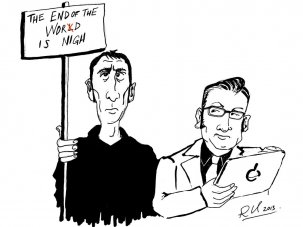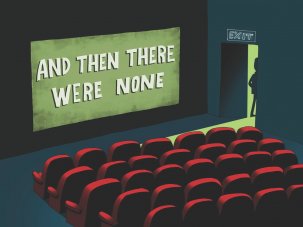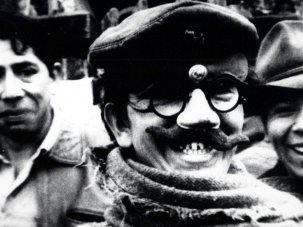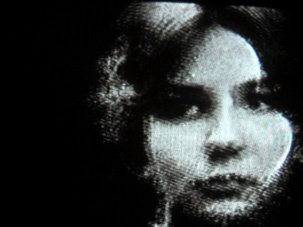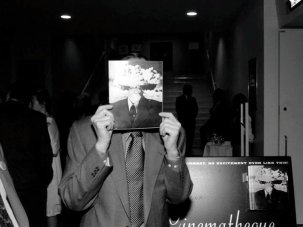from our February 2014 issue

Credit: Arthur Chiverton (arthurchiverton.com) for Sight & Sound.
Are we ‘in’ the internet like fish are ‘in’ water? Has it become the material in which we live, our lens, our medium? Has it killed off various kinds of life, like ice ages do? Is it a nice age or a vice age?
Mark Cousins’ Dispatches column runs every month in Sight & Sound: the International Film Magazine.
Judging by the talk in a little bailiwick that I know – film criticism – the answer to these questions is a variation on ‘yes’. Every film festival, every film magazine, every university is asking, “What’s the future of film criticism in the age of the internet?”
They are overestimating the revolution, I think. The smell of gunpowder has gone to their heads. Criticism is about first-order things like creativity, knowledge, expressivity, protest, play, advocacy, enchantment, passion, activism and art. None of these were invented by the internet. Most of them are what it – the internet, a second-order thing – yearns for.
To see what I mean, think of the relationship between the critic, the text, the criticism and the world. The critic looks at the text – a film, for example – compares it to the world and then, out of this comparison, makes the criticism. She says that the text is a good one because it relates to the world well and is also somehow – because of its wit, or speed, or slowness or interiority, or surprise or sorrow – beautiful in itself.
If she agrees with Terry Eagleton’s The Function of Criticism, the critic might say that the text should criticise the world for its faults – or, at least, not replicate those faults. She’ll believe that she should be wary of the world she is criticising but also not let that wariness become disillusionment. The critic, if she’s any good, will have come to realise that she doesn’t merely respond to art, she makes art.
Easier said than done. How does the critic make art, ie avoid banality? She begins by putting on X-ray specs. She looks inside the text/film. The Italian writer Roberto Silvestri says that a critic should “smash away the film’s fuselage” to see what lies beneath.
There’s a great illustration in Rudolf Arnheim’s book Visual Thinking to show what this means. He places a painting by Corot of a mother and child beside a sculpture by Henry Moore to show that, compositionally, they are exactly the same thing. He’s saying that inside the Corot, there’s a Moore. The critic must see what lies beneath. This is what the artist Douglas Gordon did in his work 24 Hour Psycho. He slowed down Alfred Hitchcock’s famous film – about slowness and sudden speed – to a frame a heartbeat, to reveal how it hypnotises.
So, as critics, we look at the world, see how the film relates to it, and look inside the film. All we have to do now is make the criticism. Notice that I don’t say: “Write the criticism.” Criticism isn’t just writing, of course. It can be an event, a place, a film, thinking, playing, defending or writing. I’ll show what I mean from my own life and work, but examples abound.
Take events. ‘A Pilgrimage’, in which Tilda Swinton, movie audiences and I , was film criticism. It visually expressed our sense that cinema is a collective experience, almost religious for us, and road movie-like. Last month, at the Stockholm Film Festival, another event, many of us were photographed wearing black eye-masks, to mark the fact that the Iranian director Mohammad Rasoulof had not been allowed to attend the festival.
And what about places? The most eloquent act of film criticism I’ve experienced was the Obala cinema, which ran during Sarajevo’s appalling siege, in which more than 10,000 people were killed. Obala was underground and very basic, but it defiantly insisted that, especially when times are hard, the flickering vitality of cinema makes you feel alive. Its illusion bolsters reality.
Another place which is, or rather could be, a great act of movie criticism, is the former Glen cinema in Paisley in Scotland. On New Year’s Eve, 1929, 71 children died in a crush inside it as the result of a panic caused by smoke from a film canister. Someone should make something brilliant about this place of horror and love.
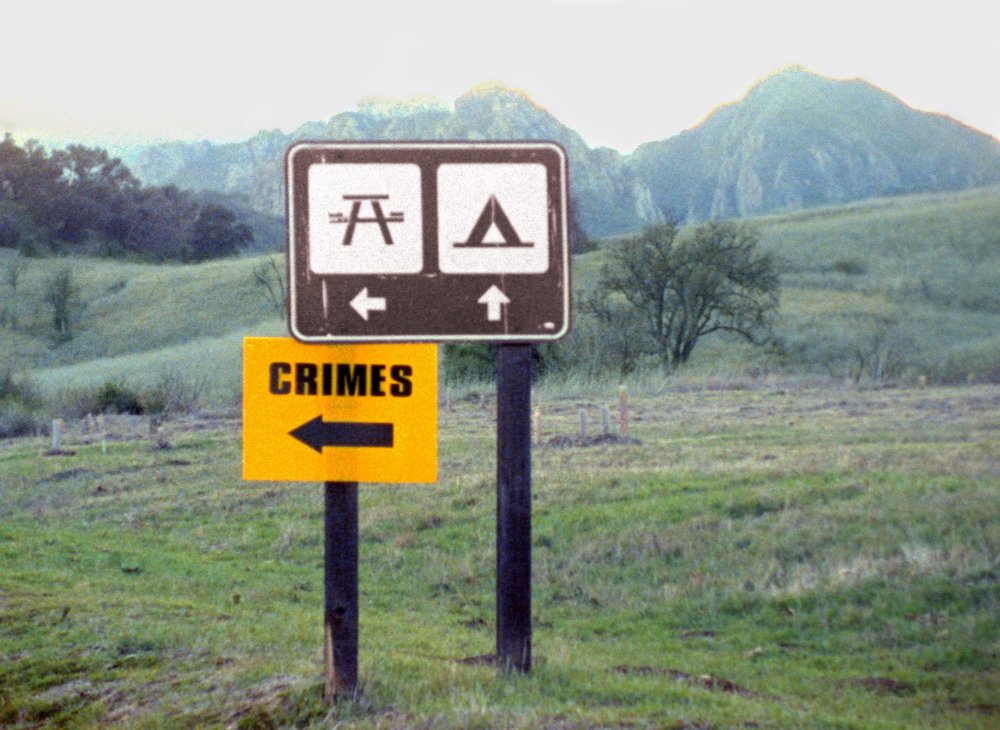
Los Angeles Plays Itself (2003)
Obviously, films can be great acts of film criticism – think of Thom Andersen’s Los Angeles Plays Itself, Scorsese’s My Voyage to Italy (Il mio viaggio in Italia), Barbara Hammer’s Devotion: A Film About Ogawa Productions or Billy Wilder’s Sunset Blvd. Central to this is thinking. The philosopher Karl Popper said, to paraphrase, “If I’m wrong, I’m right.” He suggested that we should try to disprove what we think we know. As critics we should take our ignorance seriously. We should think our way into those aspects of cinema with which we are unfamiliar.
Thinking and playing go well together. Film critics should play like DJs play. We should spin discs, segue from one film to another, keep the dance floor full. The critic David Thomson is a great player, dropping the ‘s’ off the word ‘movies’ so that it sounds wrong, the very dissonance becoming a thought bomb.
Defending can be playful too, but is the most morally serious imperative in criticism. I’ve said this before, but critics are defence lawyers, standing in court, representing work that has been sequestered. Film culture is not a meritocracy. The table is not level. People and movies are sidelined because of their class, race, nation, budget, gender or form.
Finally, there’s the kind of criticism that I am doing now – writing. Even film writing, though, is polygenetic. Critical writing can be reviewing, books, essays and interviews, of course, but it can be letters, hypotheticals and manifestos too, and more besides.
Even in my own work, this is the case. My next book, Dear Orson Welles, will be a series of letters to filmmakers, many of whom are dead. Chris Marker writes back to me to tell me why he liked the phrase “He wrote me”. I take Welles around the world. I wrote an essay about the film that Sergei Eisenstein made about Manhattan (he didn’t), and I’ve done manifestos: about essay films, film festival form, and the future of the movies. All of these are attempts to play with the point of view of film writing, the mode of address, the reality, the seriousness or otherwise, the expectation.
Combine play, and what we don’t know, and formal invention and the desire to disrupt, and you have something like Hélène Cixous’s great exhortation:
“We should try and write as our dreams teach us; shamelessly, fearlessly, and by facing what is inside every human being – sheer violence, disgust, terror, shit, invention, poetry… In our dreams we are criminals; we kill… But we are also the happiest people on earth.”
The internet doesn’t lead dreams, fear, invention, poetry or protest. It follows them. It serves them.
-
Sight & Sound: the February 2014 issue

Joel and Ethan Coen on Inside Llewyn Davis, Steve McQueen on 12 Years a Slave, Scorsese’s The Wolf of Wall Street, Altman’s The Long...
-
The Digital Edition and Archive quick link
Log in here to your digital edition and archive subscription, take a look at the packages on offer and buy a subscription.




